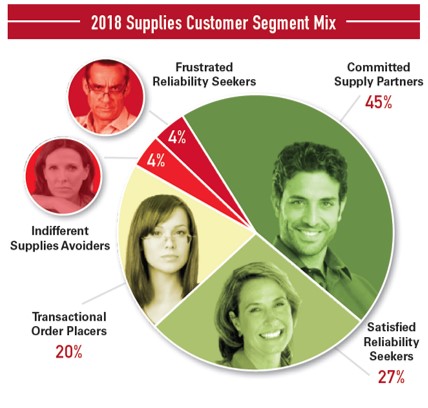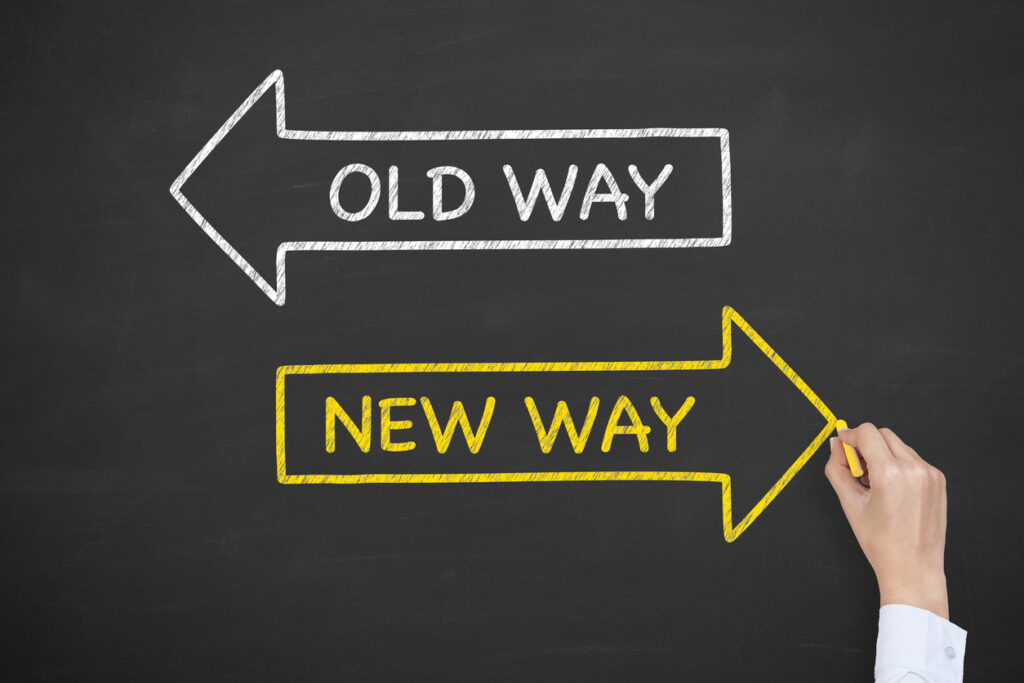A Better Way to Measure & Improve Customer Experience

Three Ways Traditional Customer Experience Measurement Can Damage Loyalty
While measuring customer loyalty is relatively easy, improving it is often much harder. Unfortunately, traditional approaches to Customer Experience Measurement (CEM) such as Net Promoter benchmarking, CSAT tracking or Customer Effort Scoring are often designed and implemented in ways that do more customer loyalty harm than good. These approaches typically miss the mark in three ways. Let’s review each briefly.
Faulty Metrics
One of the core tenants of CEM is to gather feedback at every point along the customer experience journey. This typically involves breaking down each customer touchpoint into distinct experience attributes that can be measured separately. The notion is that by measuring and maximizing these attribute scores, the customer experience and resulting loyalty will be enhanced. The big problem with this approach is that the attributes tracked have rarely been validated as drivers of customer loyalty and therefore fail to have any impact on it. Instead, operational measures of service quality and process compliance are tracked, yielding little insight or improvement.
Misguided Mechanics
Despite that CEM programs are intended to gather feedback that can be used to enhance customer experiences, they are often designed and implemented in misguided ways that alienate customers. This happens because traditional CEM providers often fail to recognize that requesting and acting upon customer feedback is actually a crucial part of the customer experience itself. They are so focused on extracting data from customers, they lose sight of CEM’s ultimate purpose. As a result, traditional CEM providers often damage customer loyalty in the process of gathering feedback on it with no-reply emails, pestering reminders and poor follow-up on complaints.
Feedback Manipulation
Perhaps the most disheartening shortcoming of traditional CEM approaches is how frequently they are manipulated by company employees. Most commonly, this occurs when front line employees or managers are rewarded or held accountable for a single CEM metric, such as satisfaction or likelihood to recommend. In response, they become primarily focused on extracting a perfect feedback score from each customer, rather than making an effort to understand and deliver on their unique needs. In fact, it’s become quite common for front line employees to implore their customers to “be sure to give me a perfect score or it will count against me.” Manipulated CEM metrics may briefly boost internal benchmarks, but won’t deliver the consistent growth and profitability that comes from genuine loyalty.
The HUMAN Brand: A Better Way to Measure and Manage Customer Experience
 To assist companies and brands in building stronger customer loyalty, our firm has developed and refined a unique HUMAN Brand CEM methodology focused on understanding and significantly improving customer perceptions and loyalty. Unlike traditional CEM methods, our HUMAN Brand metrics and feedback process are built around the foundational drivers of human social perception and loyalty: warmth and competence. Importantly, our methodology has been detailed in an award-winning book, as well as validated and cited in over 200 peer-reviewed academic research papers.
To assist companies and brands in building stronger customer loyalty, our firm has developed and refined a unique HUMAN Brand CEM methodology focused on understanding and significantly improving customer perceptions and loyalty. Unlike traditional CEM methods, our HUMAN Brand metrics and feedback process are built around the foundational drivers of human social perception and loyalty: warmth and competence. Importantly, our methodology has been detailed in an award-winning book, as well as validated and cited in over 200 peer-reviewed academic research papers.
More specifically, our work with a multi-national supplies distributor over the past several years provides a tangible example of the sustained customer experience and loyalty improvements that can be achieved with our HUMAN Brand methodology. The HUMAN Brand CEM process involves three key steps and the following case example illustrates each.
1. Benchmark Customer Experience Assessment & Segmentation

To begin, our firm gathered benchmark experience feedback from over 8,000 customers to create a foundation for ongoing tracking and improvements. This benchmark study captured customer warmth and competence priorities, perceptions, emotions and loyalty. In addition, the study identified five distinct attitudinal segments of customers, each with very different priorities, perceptions and loyalty.
Our analysis of the benchmark customer data revealed that while our client was exceeding customer expectations on several competence dimensions, such as competitive payment terms and electronic billing, they were falling short on critical warmth dimensions. So despite that the majority of customers were quite satisfied and loyal, certain segments were still being inadvertently alienated by poor and inconsistent experiences.
2. Ongoing Tracking by Touchpoint & Segment
Based on these findings, a HUMAN Brand customer experience tracking program was implemented. The program included personalized correspondence and an early alert system that routed customer concerns to a dedicated problem resolution specialist that would follow-up personally within 48 hours. During the first year, over 16,000 customers provided feedback and over 1,000 experience issues were proactively identified and promptly resolved through the tracking program.
In addition, operational changes were made based on the timely feedback received. These included simple but greatly appreciated improvements, such as increased inventory in certain locations, reduced supplier drop-shipping and enhanced website search features. Customers responded with double-digit increases in satisfaction, willingness to recommend and loyalty. Importantly, these significant customer experience and loyalty improvements have been sustained over the past four years.

3. Personalized Communication & Support by Segment
 The strongest customer experience and loyalty gains were achieved with customers in the Frustrated Reliability Seeker and Indifferent Supplies Avoider segments. This was accomplished with communication and support that was tailored to the unique warmth and competence priorities and perceptions of these customer segments. These personalized experiences are critical to achieving stronger loyalty, as they demonstrate a deeper understanding and commitment to customer priorities and needs.
The strongest customer experience and loyalty gains were achieved with customers in the Frustrated Reliability Seeker and Indifferent Supplies Avoider segments. This was accomplished with communication and support that was tailored to the unique warmth and competence priorities and perceptions of these customer segments. These personalized experiences are critical to achieving stronger loyalty, as they demonstrate a deeper understanding and commitment to customer priorities and needs.
As a result of this targeted communication and support, our client experienced a dramatic shift in the proportion of customers in each segment. In particular, the most loyal and valuable segment, Committed Supply Partners, grew from 30% of customers to 45%. At the same time, the most troubled and unhappy segments, Frustrated Reliability Seekers and Indifferent Supplies Avoiders, declined from 20% of customers to only 8%.
Significant Financial Impact
Our client found clear financial benefits from improved customer experiences, as those accounts reporting the strongest loyalty spent 36-107% more on supplies with them annually. In addition, their most loyal customers contribute fully 65% of annual revenues, as shown below.

Perhaps most importantly, our HUMAN Brand CEM methodology provided measureable impact on revenue, as illustrated by the structural equation model shown below. This analysis indicates that for every 1 point increase in warmth and competence perceptions (on a 7 point scale), customer loyalty to the client increases by .91 points. In addition, for every 1 point increase in customer loyalty (on a 7 point scale), annual revenue increases by $356 per customer – a 12% increase!


Unlike other CEM methods, the HUMAN Brand process goes well beyond competence-oriented attributes of customer experience to assess the warmth and intention dimensions that drive loyalty and trust. In addition, it identifies exactly which customers should be addressed with personalized experience enhancements. As a result, our HUMAN Brand measures deliver much more in-depth insights that can be acted upon with greater precision to achieve lasting improvements in customer experience, loyalty and revenue.
For a more in-depth discussion of this case example and HUMAN Brand customer experience measurement, please download our white paper here.


















